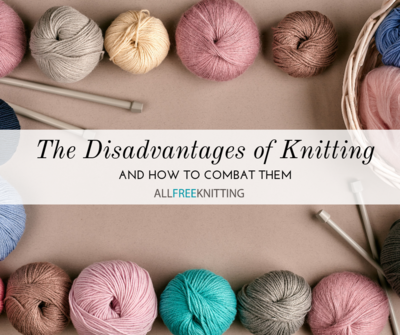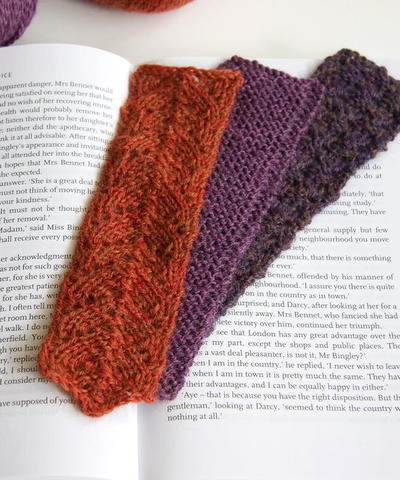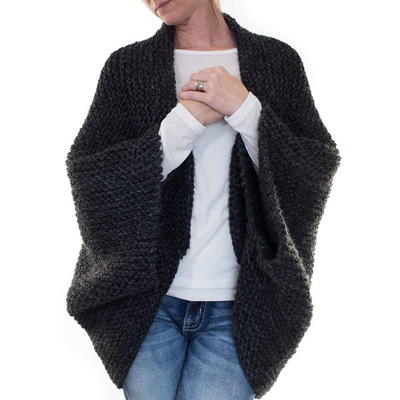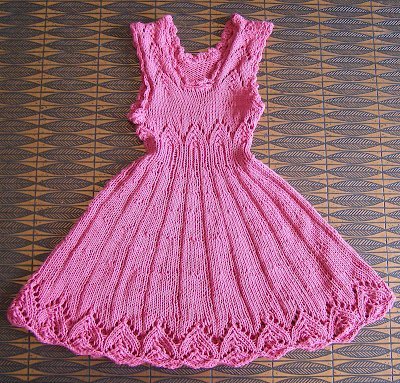What Are the Disadvantages of Knitting?
And, no, the answer isn't "there are none," but different types of knitting have different disadvantages.
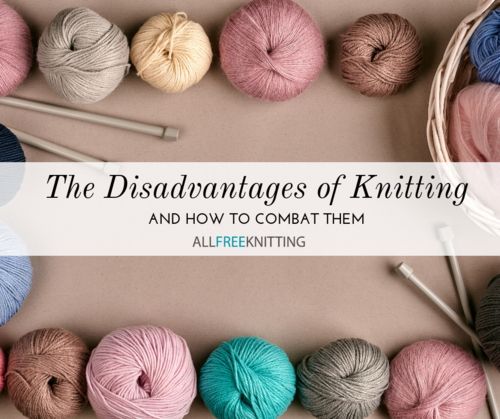
There's a dark side to knitting that most of us refuse to acknowledge. Like anything material and mortal on this planet, nothing is objectively purely good without a little bit of darkness thrown in there. The same can be said for knitting; while its benefits are numerous, there's no doubt that every seasoned knitter out there has found him or herself poring over their needles in frustration, annoyance, sadness, or just plain anger.
Knitters of almost any skill level can testify to these common problems associated with knitting, but knowledge is power! While these disadvantages are most certainly outnumbered by the advantages of knitting, we can still quite easily combat each and every one with certain techniques or a change of attitude. Rather than ignore our frustrations with knitting, it's much more productive to address each one.
1. Knitting is a Real Time-Suck
Creative types can often lament to one another that they have too many hobbies and not enough time in a day to get to all of them. This is especially true for people who even just dabble in knitting; while people can start and finish jewelry pieces, paper crafts, and even rudimentary sketches in just a couple of hours, even a simple hat is often a multiple-day affair for knitters, especially if those knitters are also responsible for a family, housekeeping, and a full-time job.
How Can We Combat This?: There are methods to speed up your knitting, such as switching from English-style knitting to continental knitting. We even found this incredible video on speed knitting! If you're not interested in fundamentally changing the way you knit, try critically thinking about what you could conceivably multitask with. You could probably knit while you watch your children at the park or catch up on that book you've been meaning to read (in audiobook form!), but maybe you want to give certain things, like the little one's soccer game or date night with your loved one, your full and undivided attention.
Learning basic time management can also come in handy. If you can block off just an hour or two every night (and even use your lunch hour to knit, if you're a worker bee) and put down your needles squarely at the end of this time, you'll have plenty of the day left over for other activities and still watch your projects grow every day.

2. Knitting is Costly
It's funny how the solution somehow has become the problem: knitting used to be the way people responded to outrageous prices of simple clothing items that they couldn't afford. Yarn, a pair of knitting needles, and your extra time would offset the price of clothing significantly. As time has passed, the cost of yarn has skyrocketed and fast-fashion has rendered it much more affordable to fill your wardrobe with cheap sweaters and scarves than to lovingly knit each one by hand. Never mind how much more expensive it is to purchase natural-fiber yarn as opposed to simple acrylics! One sweater can run you over a hundred dollars, not to mention the many hours you'll funnel into it when you can just run to the store and pick up a similar one for half the price.
How Can We Combat This?: Money can't buy happiness, but it's important to grant yourself a shift in perspective, in this case. What is it about knitting that you love? Sure, wearing and showing off your finished object is always fun, but the act of knitting itself is what brings most people peace, enjoyment, and many other therapeutic benefits. If your main goal when knitting is to enjoy the journey, you can stand to be less of a yarn snob and buy more cheap, box store yarn.
Alternatively, if your joy from knitting largely comes from the pretty, fancy yarns you buy, you shouldn't feel ashamed of spending your own hard-earned money on something you thoroughly enjoy. That said, if your knitting is draining your bank account and leaving you seriously financially burdened, that is a different story. Either you need to cut back on your expensive yarn, or you need to cut back in a different area of your life. Don't forego your family's food for the sake of five more skeins of your favorite handpainted silk and merino blend yarn, and consider just purchasing some of your clothes rather than insisting on knitting them all.
3. Knitting Can Worsen Arthritis
As of writing this article, I am 26 years young and can attest that knitting brings me physical pain. Sometimes, I find myself in a four hour-long knitting session (time just gets away from me, I swear!) and my fingers ache from gripping tiny needles, and sharp pains in my wrist beg me to just take a damn break. Like most other crafts, aches and pains come with the territory of working on something too fiddly for too long, but it becomes a real problem with the big A word: arthritis. With arthritis, even small, everyday tasks are difficult and unenjoyable, so it's nothing short of tear-inducingly frustrating when you can't even do a craft you love anymore because the pain is too unbearable.
How Can We Combat This?: Ultimately, the answer here lies in listening to your body and knowing when enough is enough. If you feel even just a bit of pain coming on, it's best to put your knitting down for a good, half hour break, and even take some time to do some finger stretches and exercises. Coincidentally, this will also help you out with disadvantage number 1 by forcing you to take a break and focus on other things.
If you're past the point where frequent breaks will help you, or you're a long-time arthritis sufferer, consider replacing some of your knitting time with less painful alternatives, such as loom knitting or knitting machines. There are even tools which specifically help lessen knitting pain, such as knitting thimbles or arthritis gloves.

4. Knitting is Attention-Grabbing
Depending on the type of person you are, this might not even be a disadvantage! For wallflowers, the struggle of how much of a sore thumb knitting makes you is very real. Perhaps a few decades ago it wouldn't be all that memorable to see a person knitting away on her seat on the bus, but in the advent of the digital era, where people are typically either on their phones or tablets in public, or otherwise not doing anything, watching a person knitting in the back of a cafe with her knitting needles clicking away is a bit of a spectacle.
How Can We Combat This?: If you're the type of person who wants to face this problem head-on, rejoice! With knitting becoming more popular, just stick to your guns, continue to knit in public, and let them stare. It won't seem like it's a weird thing if you don't act like it's weird. If anyone has the gumption to come up to you and ask you about your knitting, even better! Educating people will cut down on their confusion and make it less weird for them, too. However, if the idea of all those people on the bus staring at you makes you want to roll over and die, you only really have two solutions: you don't knit in public (there's nothing wrong with this option!) or you get over it.
5. Knitting is Something a Lot of People Don't Understand
Sometimes, people are disappointing. Some people, when they find out you knit, will begin pestering you for hand-knit items in ludicrously short time frames, and then don't even appreciate or wear the handknitted item once it's complete. These people quite simply don't understand the time commitment, attention to detail, and selfless dedication that knitting for others entails. It's not their fault—they don't have any real knowledge of knitting and just don't get it.
Don't get me started on the people who confuse knitting for crochet, or assume the two are interchangeable.
How Can We Combat This?: If you have a particularly difficult family member who takes advantage of you and your kindness, teach them how to knit! Worst-case scenario, they can't make it through casting on and have gained a newfound appreciation for the craft, even on the smallest scale. Best-case scenario, they learn to love it, take up knitting, and come back to you a year later after they've gained some perspective and apologize for everything.
If this is more of a general problem in your life, the easy solution is to stop knitting for people who don't appreciate it. Knitting isn't just a hobby—it's an art form. You wouldn't ask someone to make you an oil painting of the ocean, and then chuck it in storage and never look at it again! Test the waters and knit each of your loved ones something small that you genuinely believe they'd love. If you frequently see this person wearing (or using) your knitted item and treating it tenderly, feel free to knit them more in the future and even ask them specifically what they would like knitted! If they never use or wear the object, don't knit for them anymore. Period. If this person later asks you to knit them something, bring up the last object you knit them in a nonconfrontational way and ask, as politely as possible, if this new thing is something they would actually use and appreciate. Use your best judgment from there on.
6. Knitting is Difficult... Initially
How many people do you know have picked up a pair of needles, trying to learn how to knit, only to give up after less than a week of trying because they're just not getting the hang of it? Heck, maybe that was even you back in the day! Before I truly taught myself to knit a few years ago, I'd tried knitting as a fifth grader with my mom's spare pair of needles and some yarn from Hobby Lobby. I made a garter stitch scarf and didn't pick up the needles again until I'd totally forgotten how to knit. It was hard! The scarf looked like crap! I had better ways to spend my time.
It's true that learning how to knit can be endlessly infuriating, and it's a huge time commitment at first when each row of your first project takes you a full three minutes because you have to constantly be thinking of where to place your needle and which way to wrap the yarn. This is a major disadvantage of knitting, even though most of us get over it, because so many potential knitters are thwarted by only the beginning stages!
How Can We Combat This?: Luckily, if you're reading this, you probably already have! If you have a new knitter riding the struggle bus on his or her first project, try to remember how hard it was for you on your first day (or, let's be honest, first month). Offer up any help you could possibly give, and remind that person that you have a wealth of knowledge (and probably a few video tutorials stashed away) that you can give to them if they need an extra push. Inviting them to join your knitting circle will also help stop them from getting discouraged, because feeling like part of a community is the real antidote to knitting woes.
7. Knitting Encourages Hoarding
Maybe we all started out with just a skein or two of worsted weight yarn and a pair of size 8 straight needles, but one of the top complaints from seasoned knitters is that there is no place for their yarn, their needles are spilling everywhere, and they have more patterns in their queue than they'll ever actually complete. With sites like us offering free knitting patterns from all over the Internet, it's inevitable that we'll collect and collect various needles, patterns, and yarns with all of the best intentions to knit that one really cool shawl and that intricate cabled sweater... but never get to it. Then, by the time you've finished your next pattern, that one pattern that caught your eye doesn't appeal to you anymore, and a brand new one grabs your attention, leaving all of your queued patterns in the dust.
How Can We Combat This?: Repeat after me: I will work through my queue. Put yourself on a no-buy for a while, except for yarn you need to complete the projects in your long list of patterns to complete. While you're at it, cull your list. Will you really wear this fair isle cardigan? Does Jonny really need another beanie? Did your husband even ask you for that sweater? Cut it down to basics, and complete those projects. Only when you are at least halfway through the final pattern in your queue are you allowed to start preparing for the next one.
Additionally, stop having more than two projects going at once! Some people need to have two at once because one is a gift and the other is for pleasure, or because they find themselves getting too easily bored of their long, complicated project, and need a second quick and easy one. This is all very understandable. However, there is no need to have more than two projects on the needles: they become hard to store, hard to get to, and use up all your needles, encouraging you to buy another set of needles since yours are currently unusable.
Let's talk about needles, too. Since circular needles can be used to work something flat, I highly recommend getting a good, solid set of interchangeable circular knitting needles to use as your primary set of needles. Long ones can even use the magic loop method for smaller-diameter circular projects, but I still recommend having a set of double-pointed knitting needles in addition to your circs. You'll find a lot of your straight knitting needles aren't really needed and can be thrown away, unless you significantly prefer straight knitting needles.
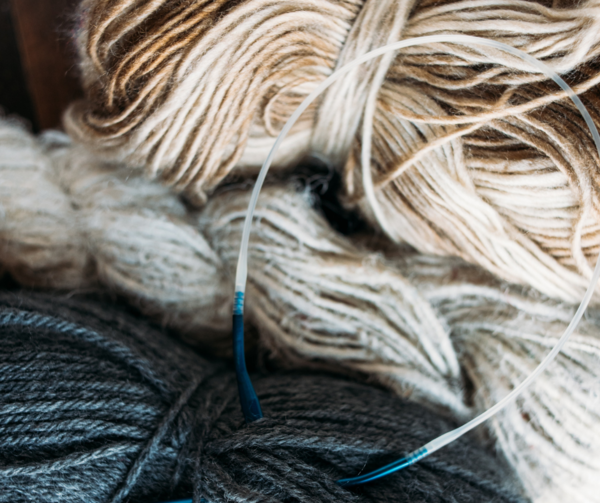
What are some other disadvantages to knitting, and how do you combat them?
Read NextMeditation Cocoon Knitting Pattern

